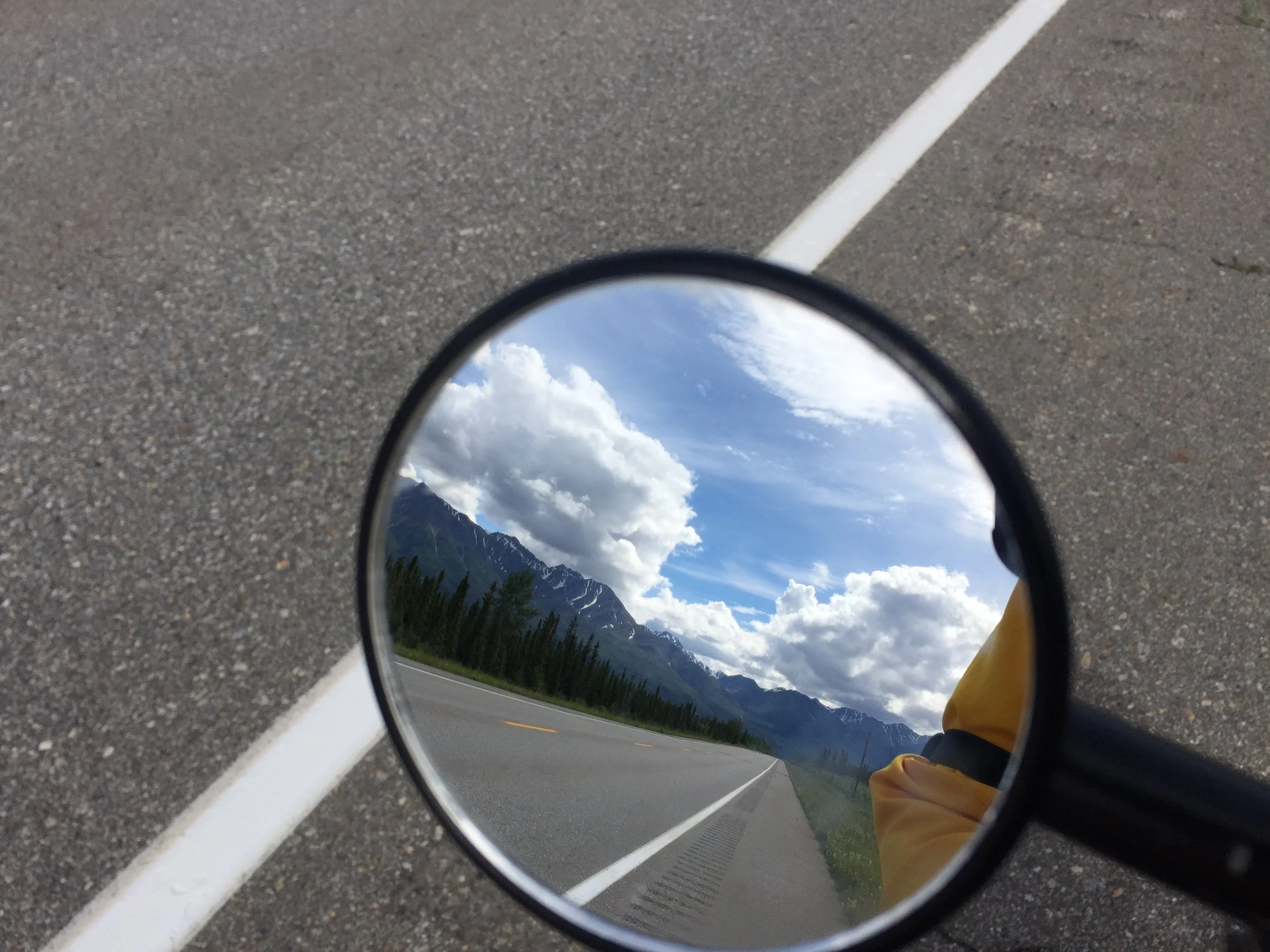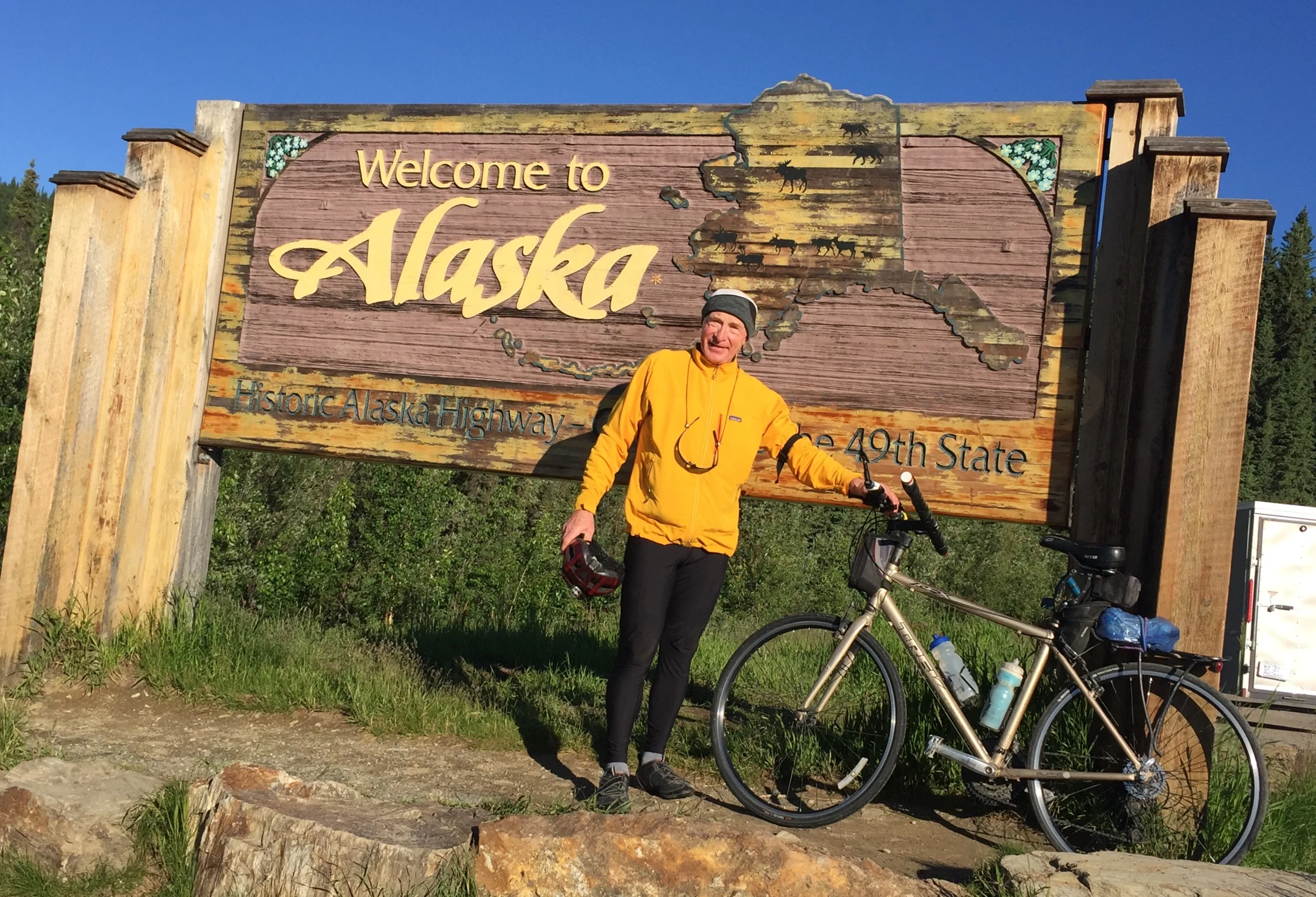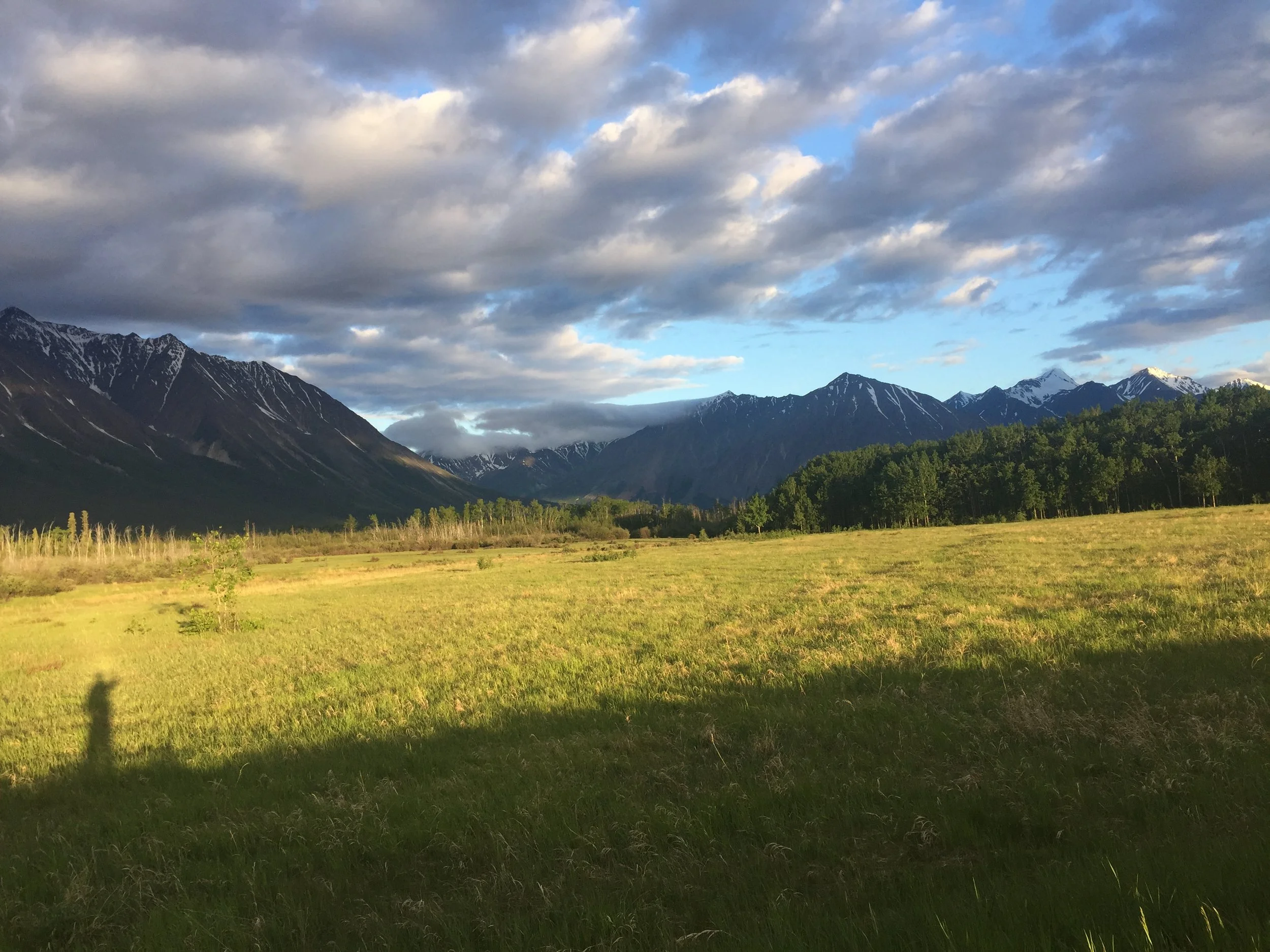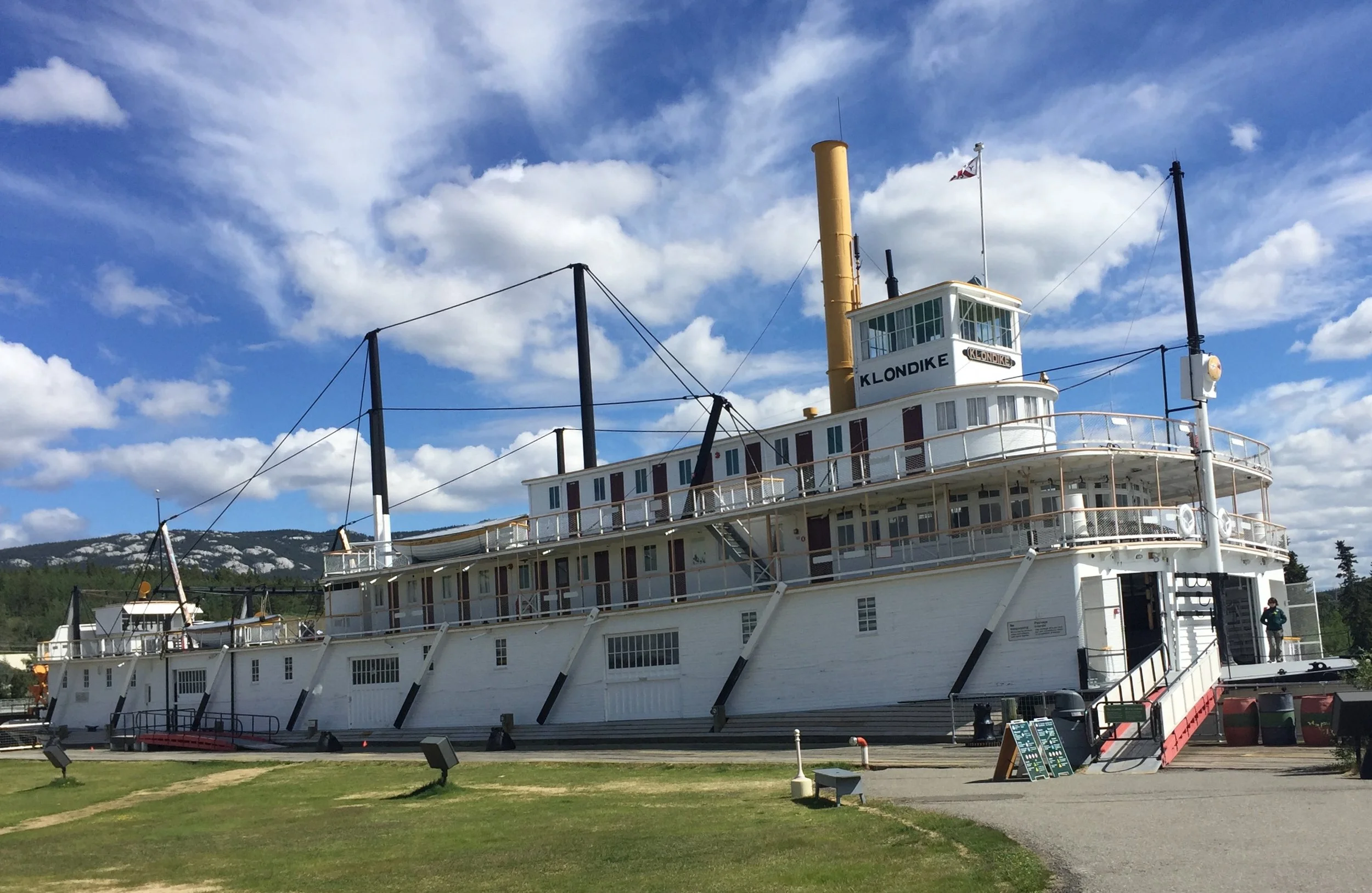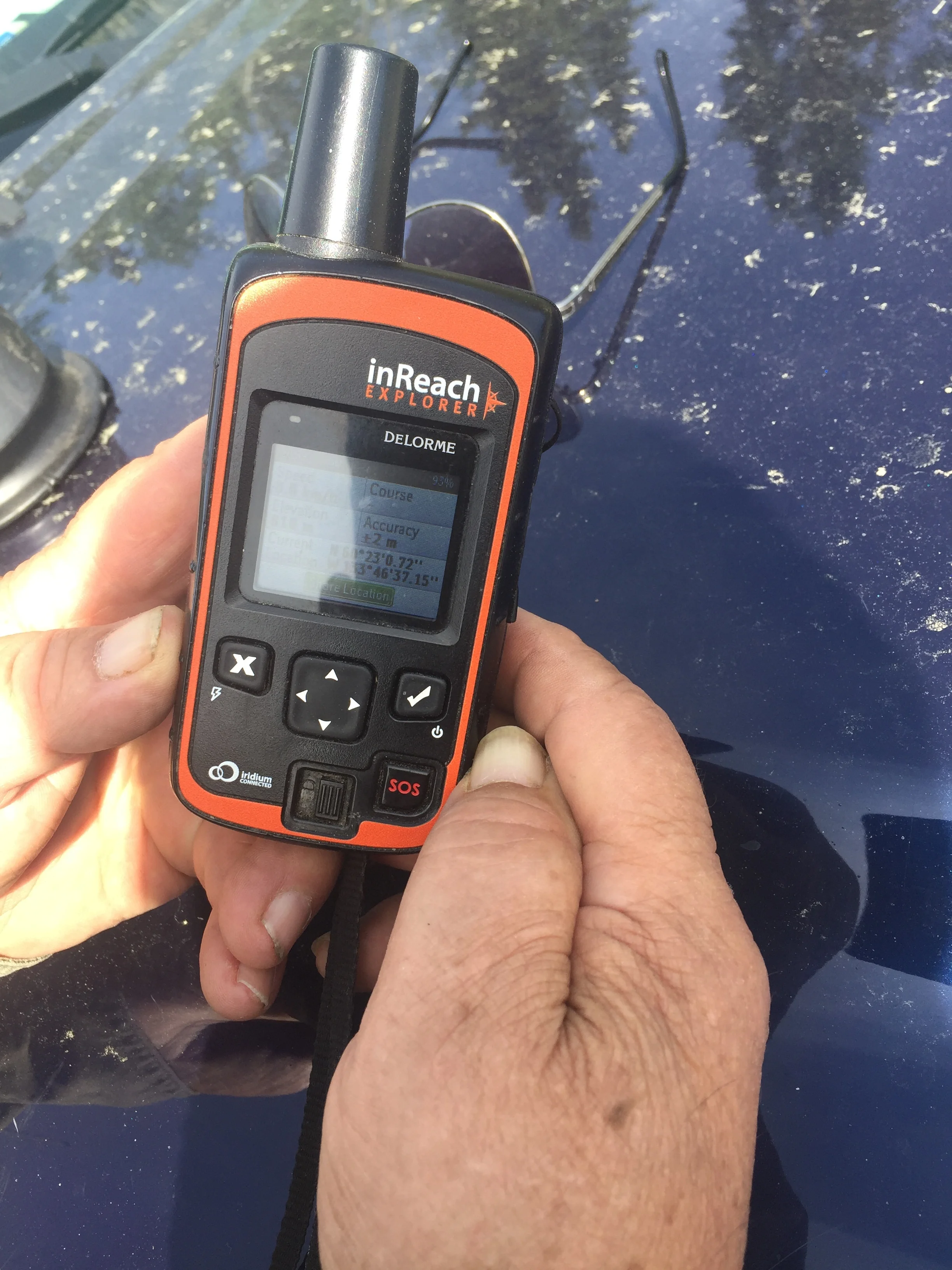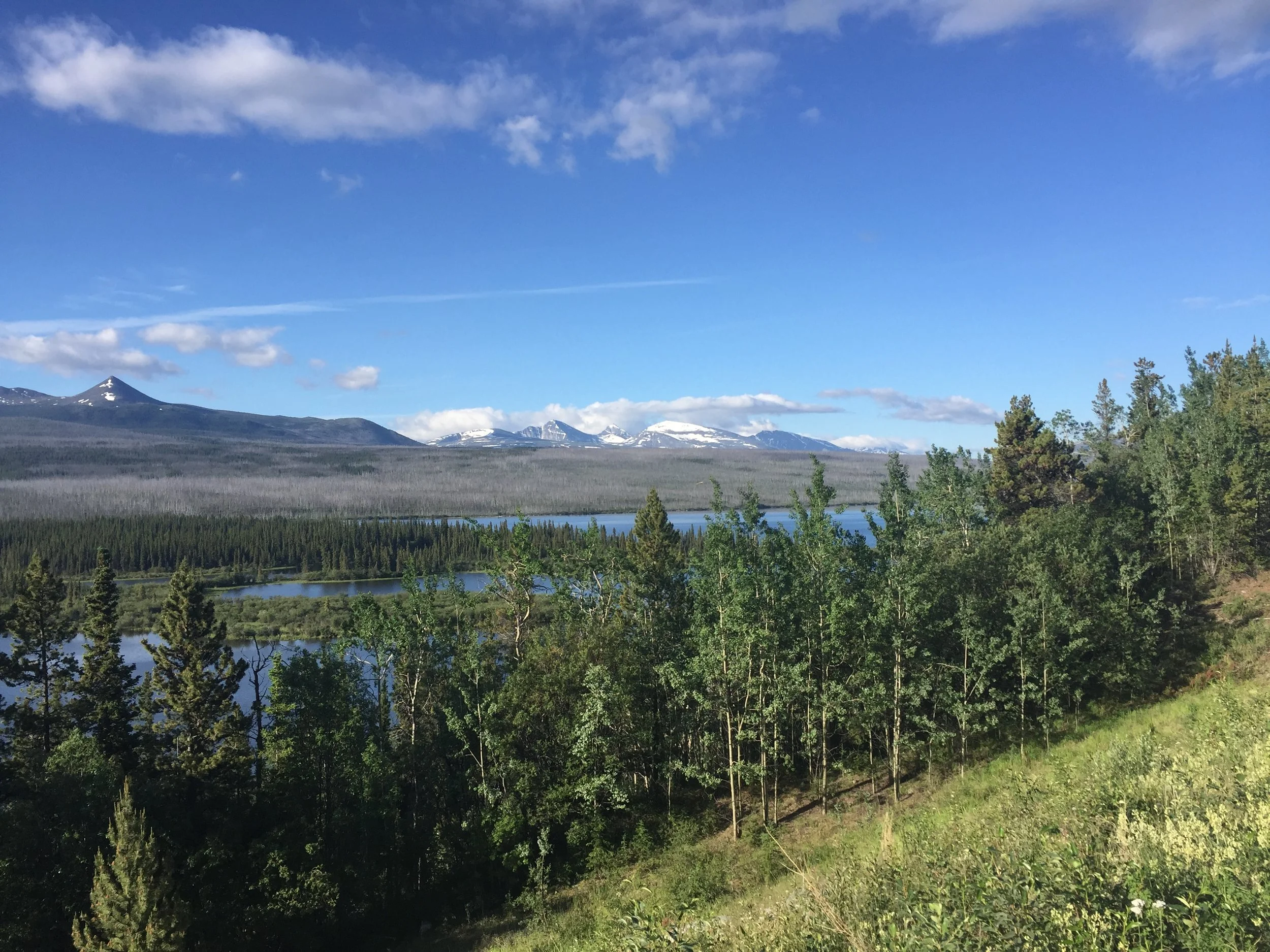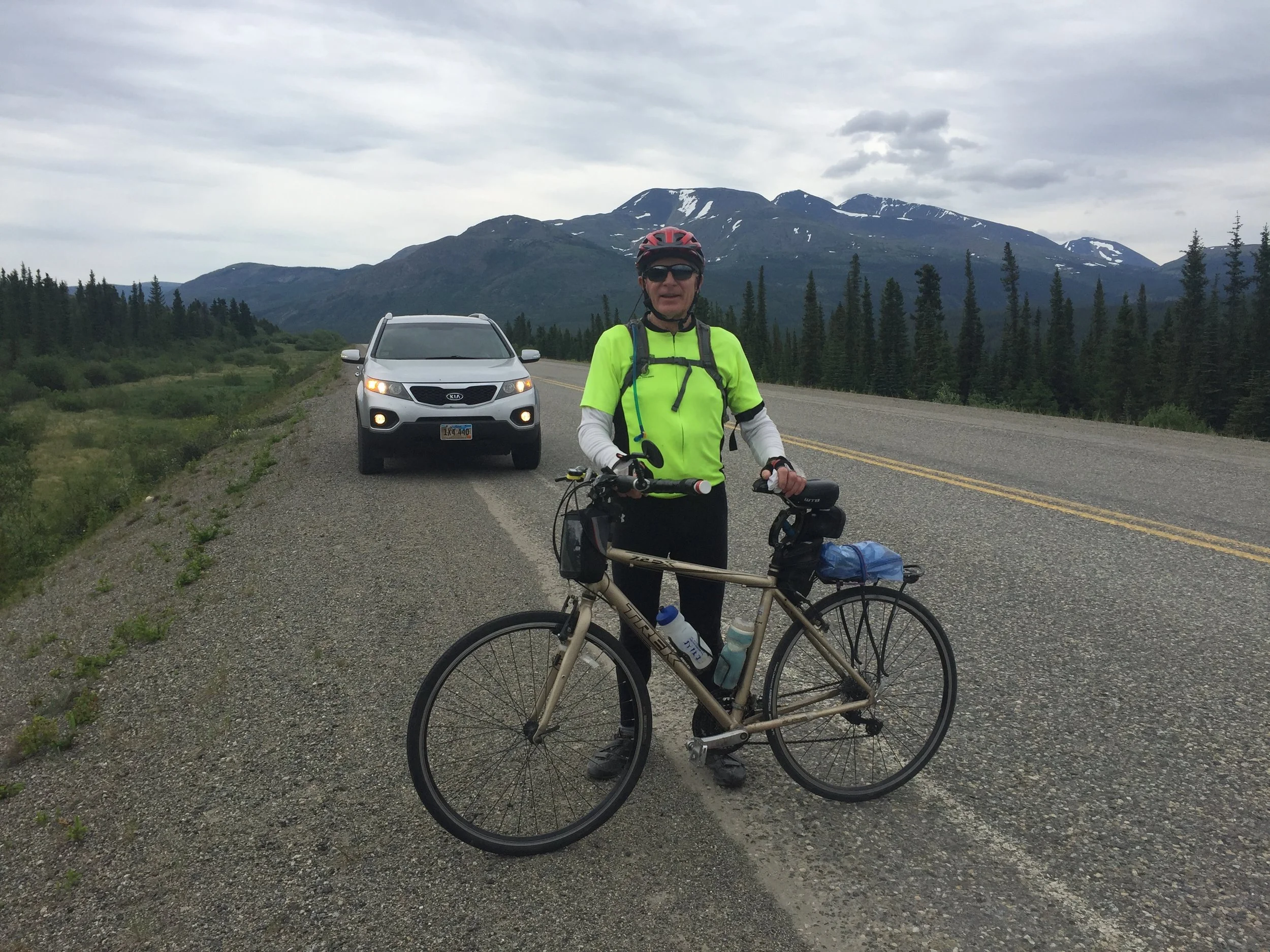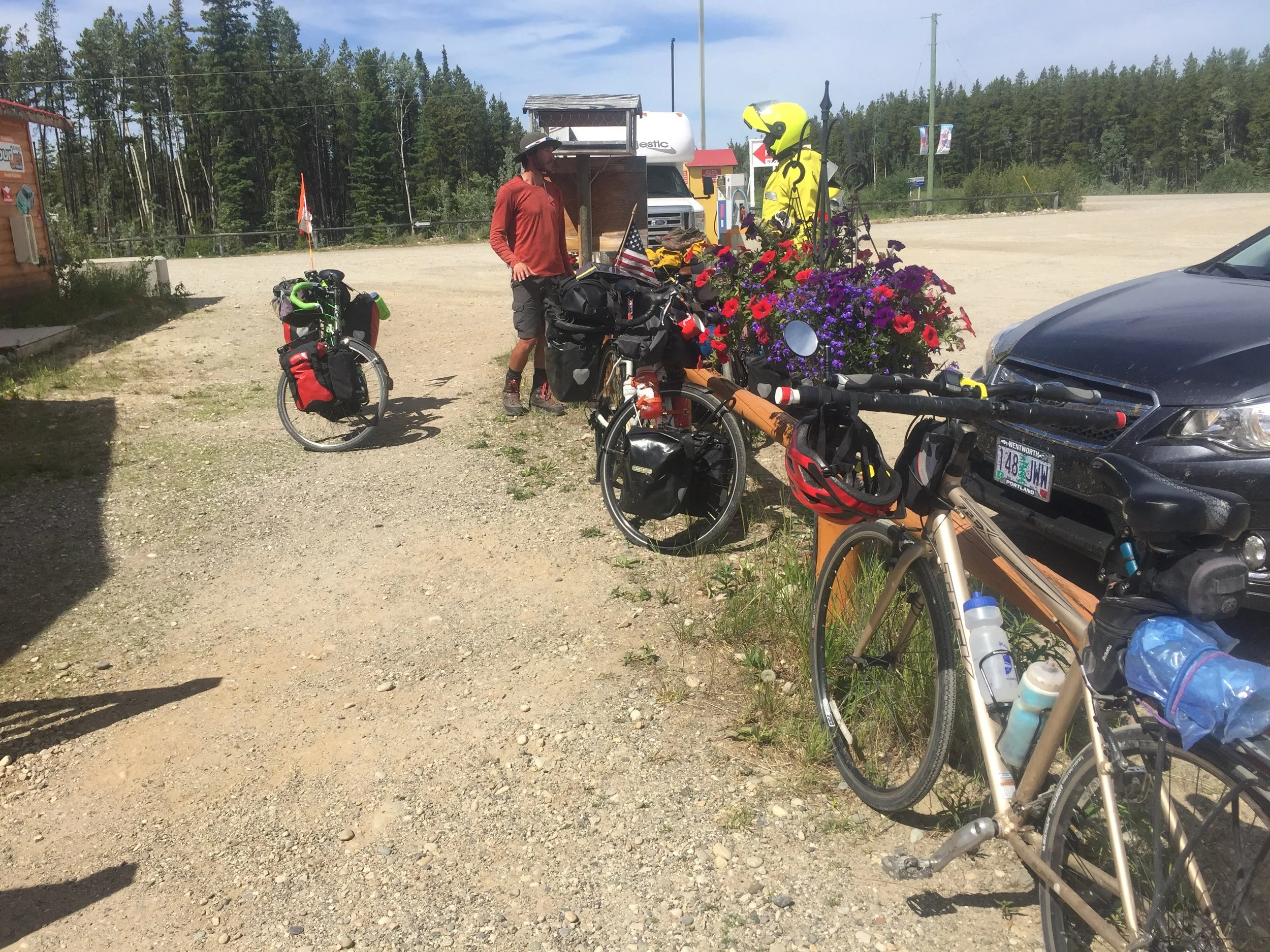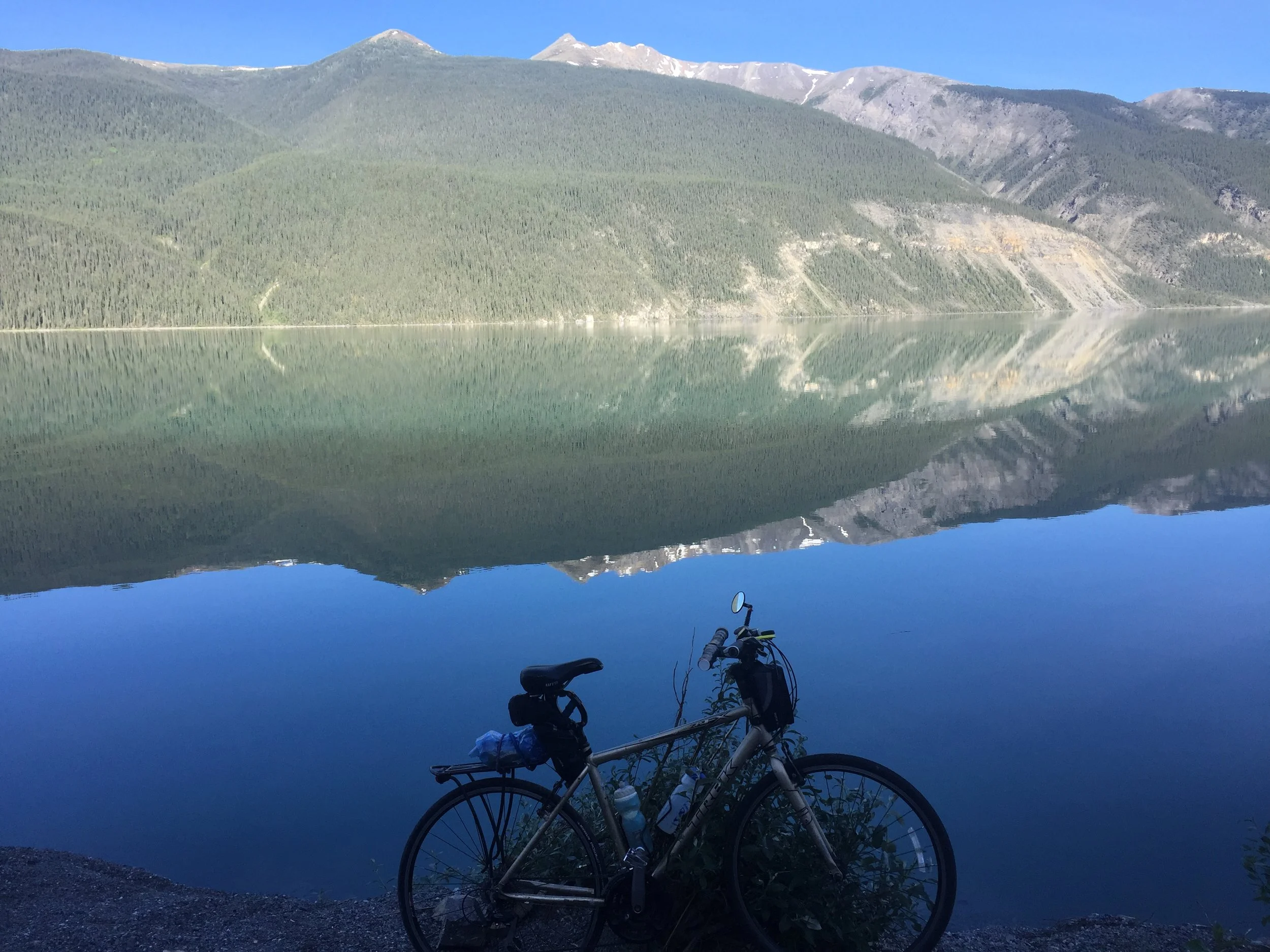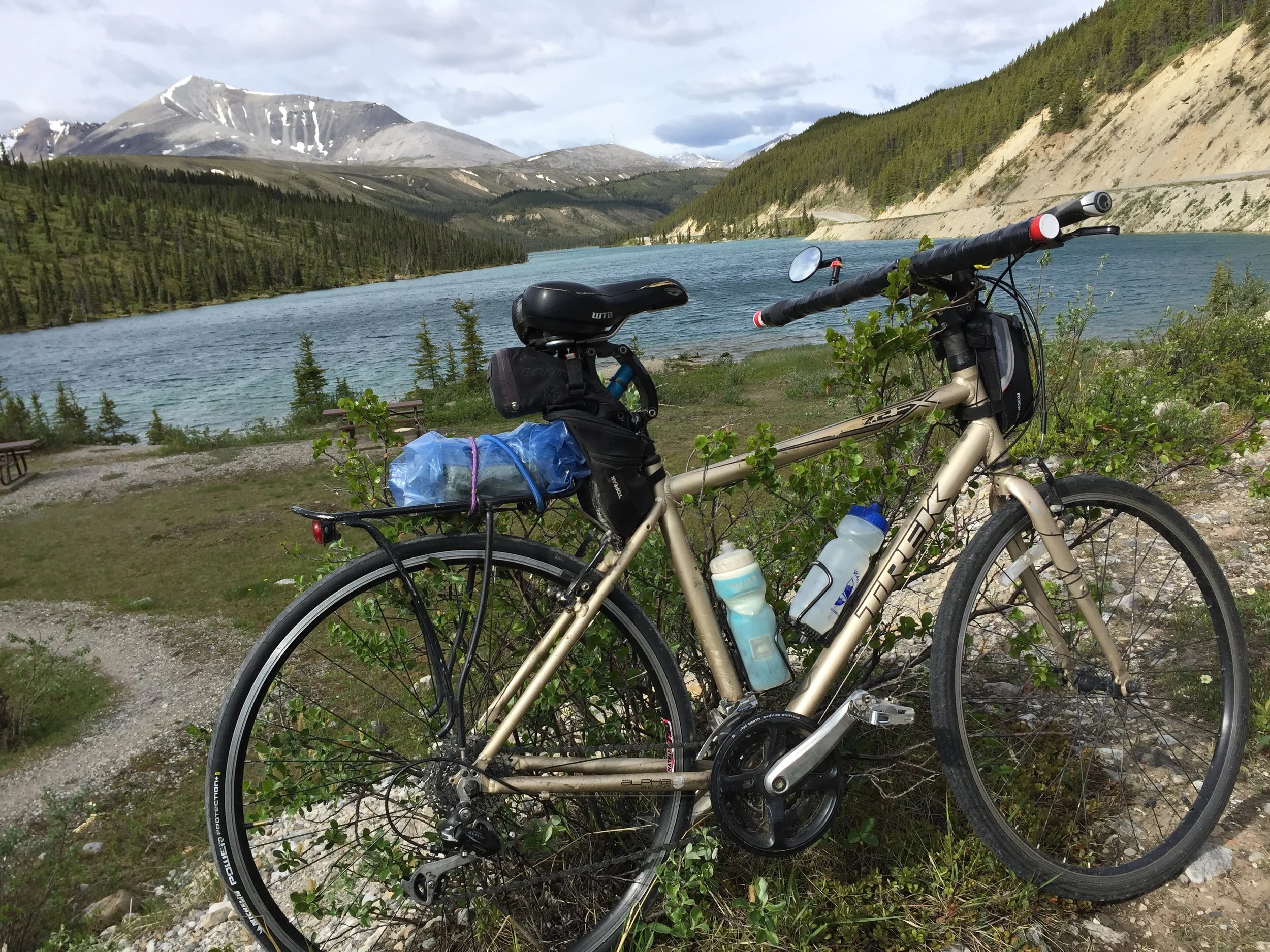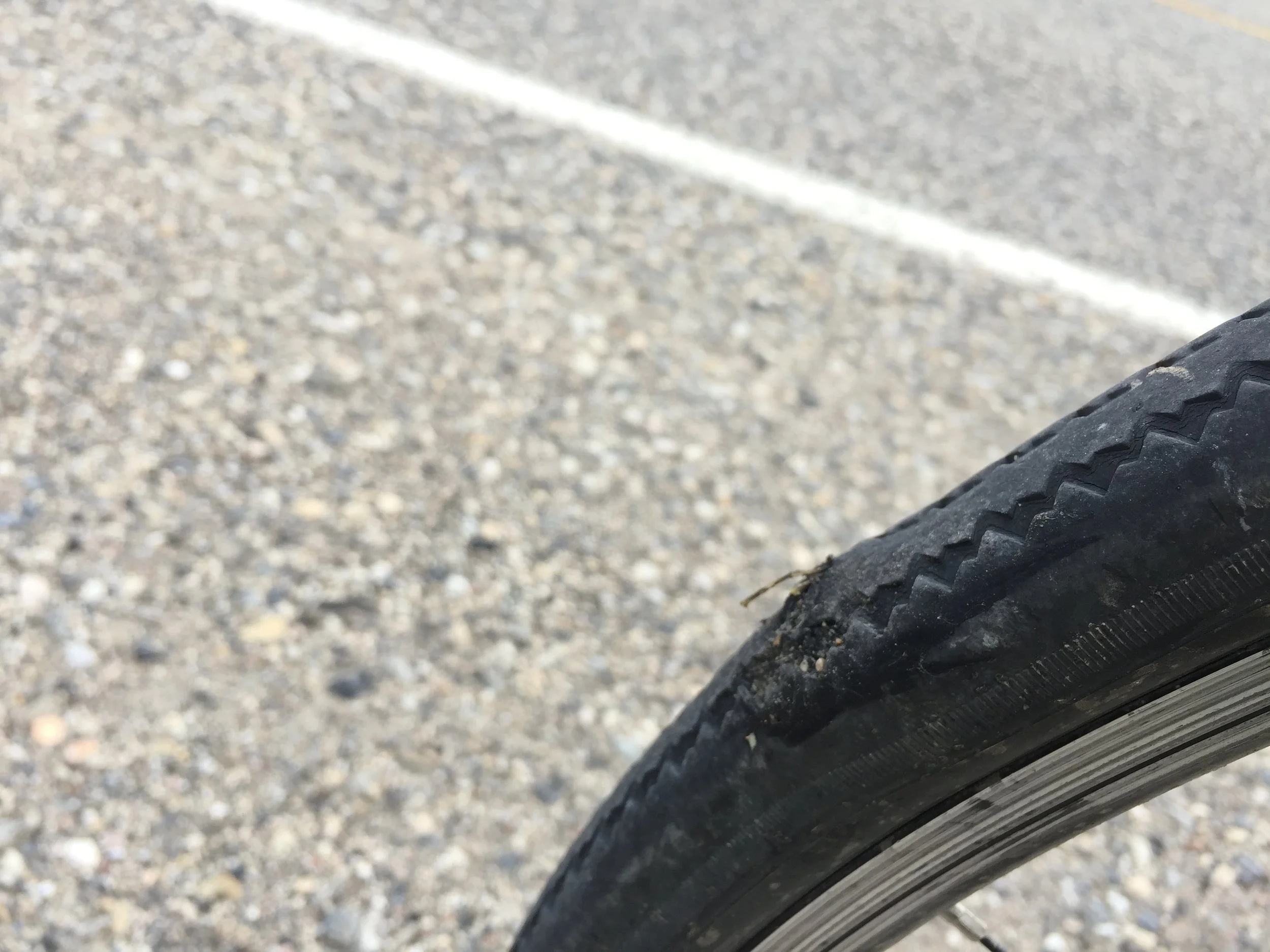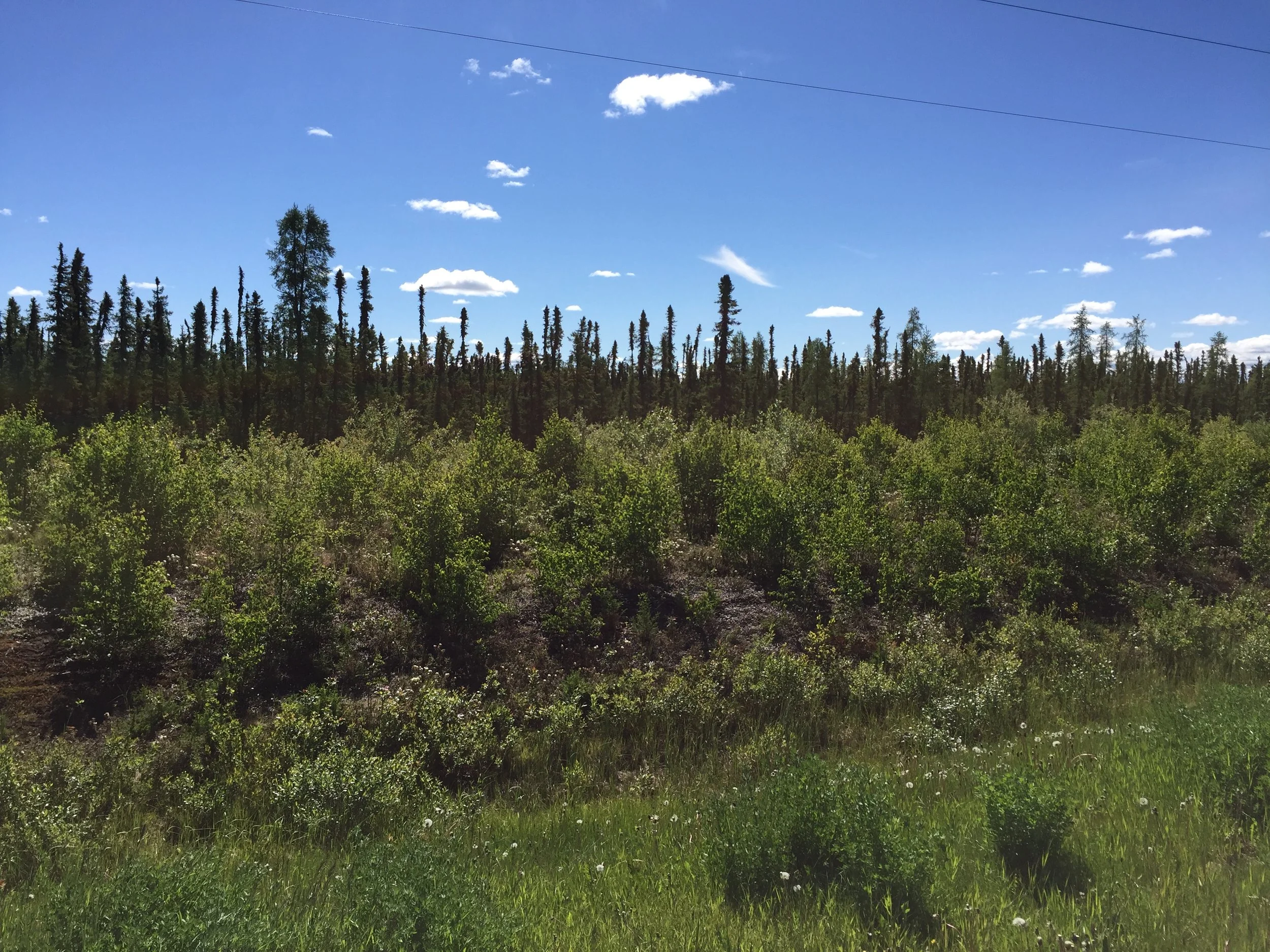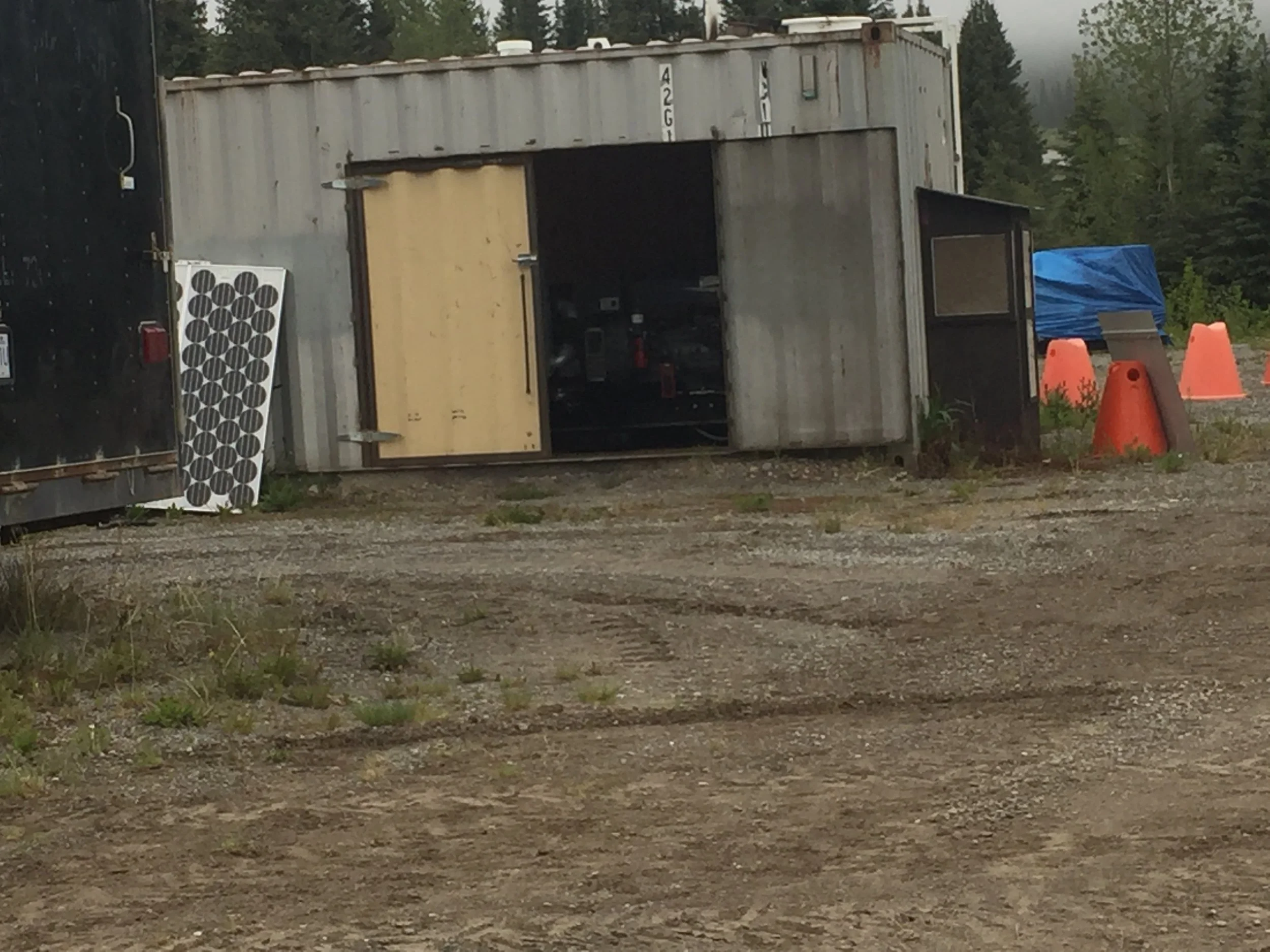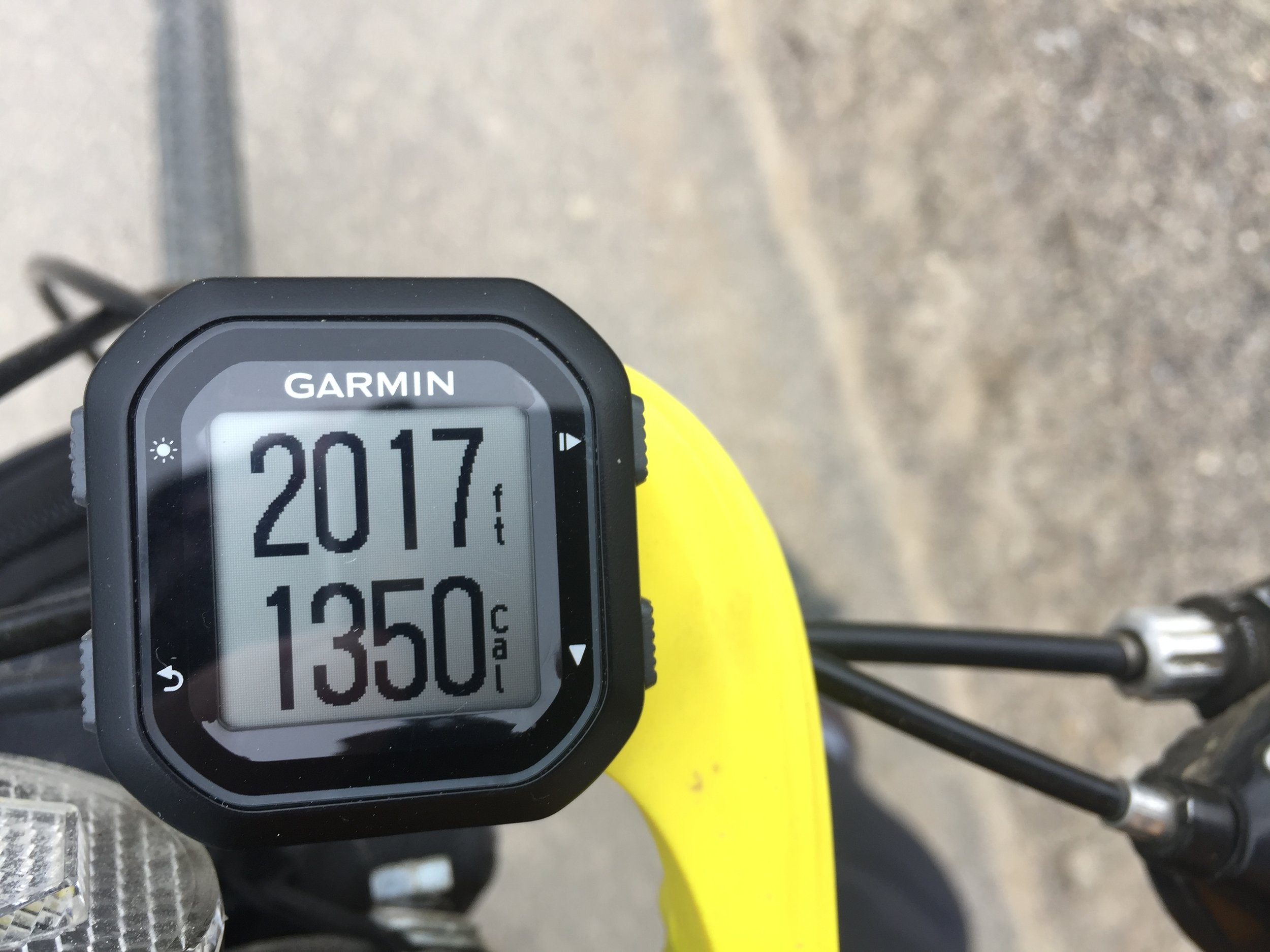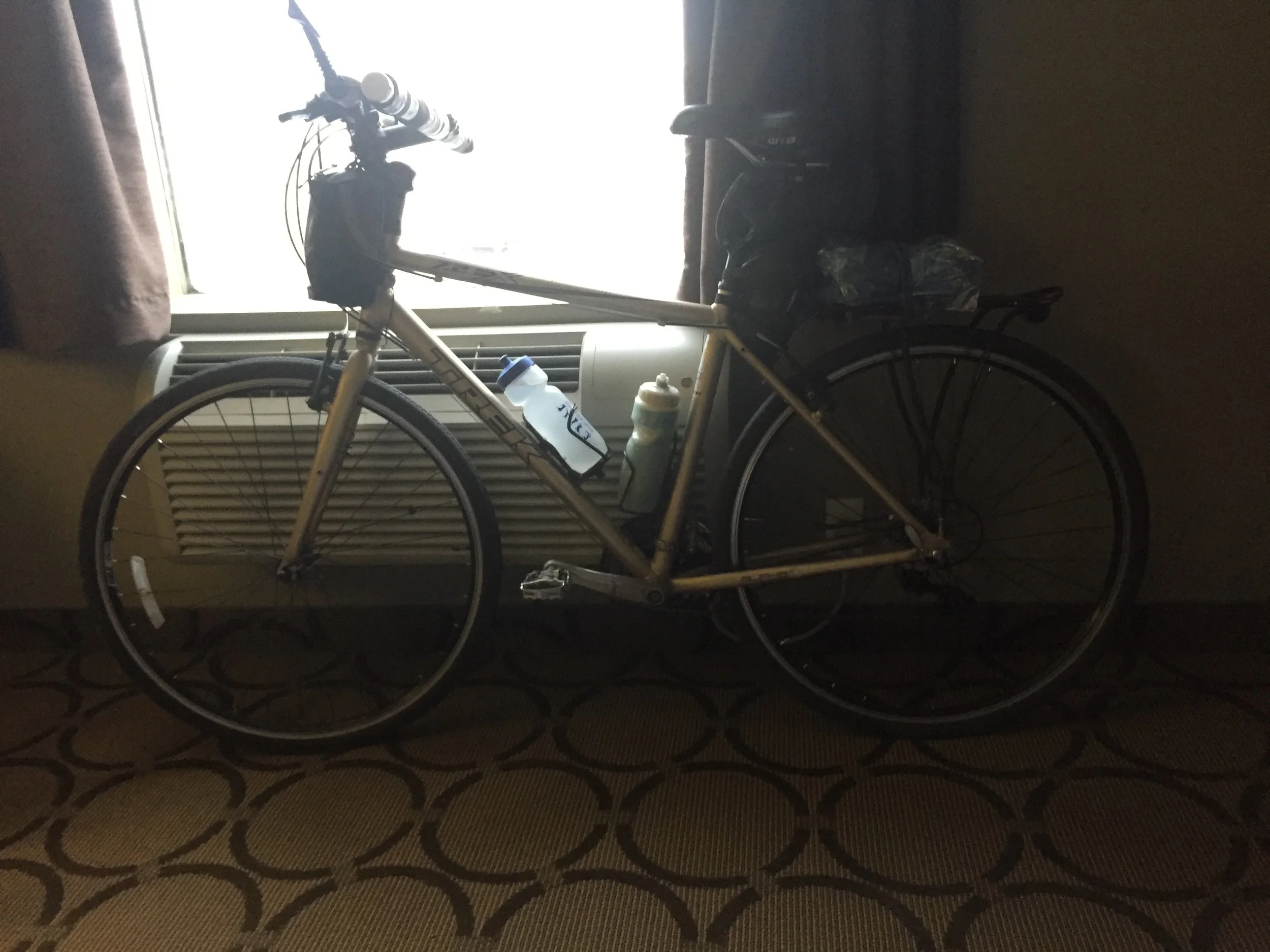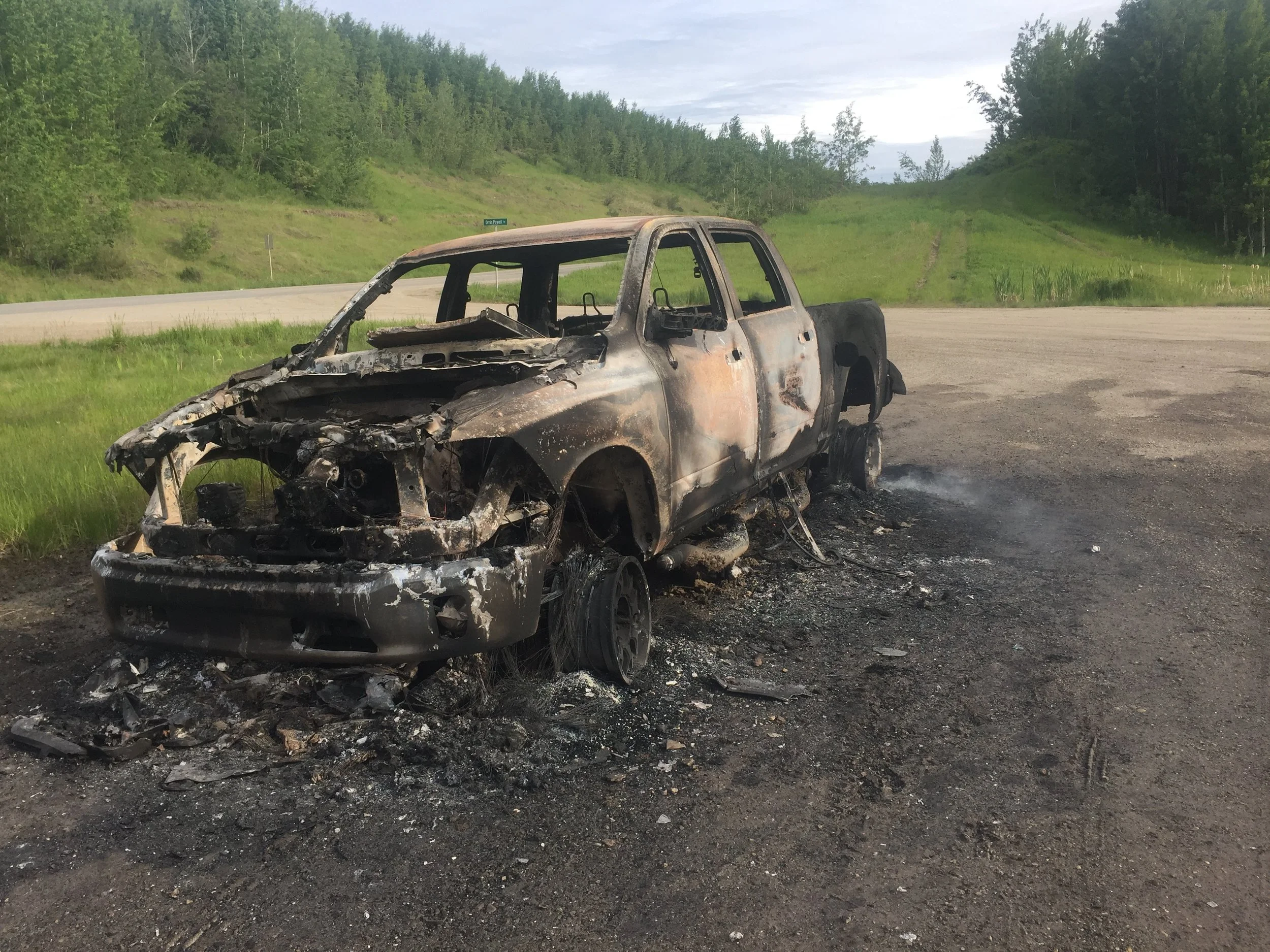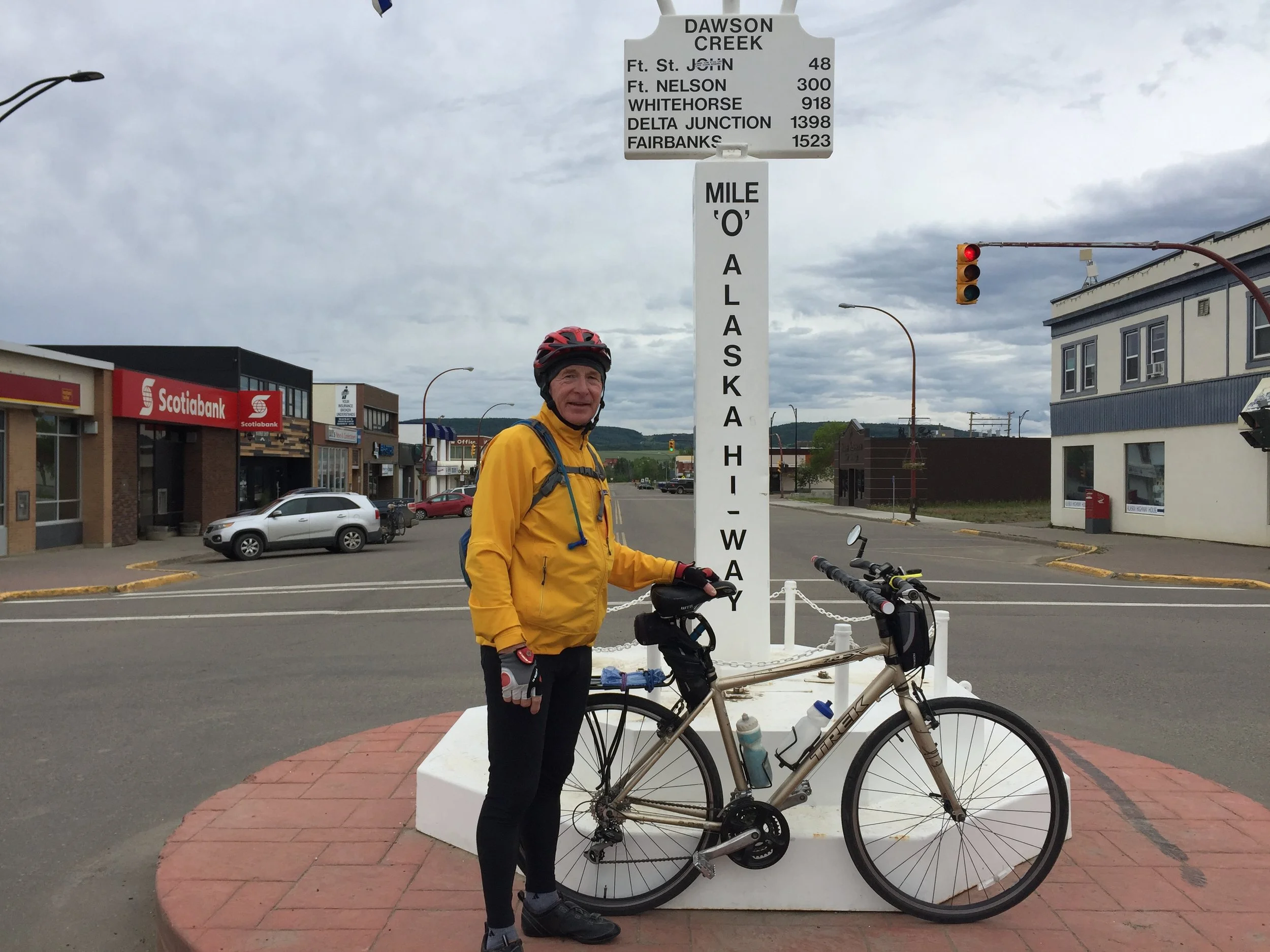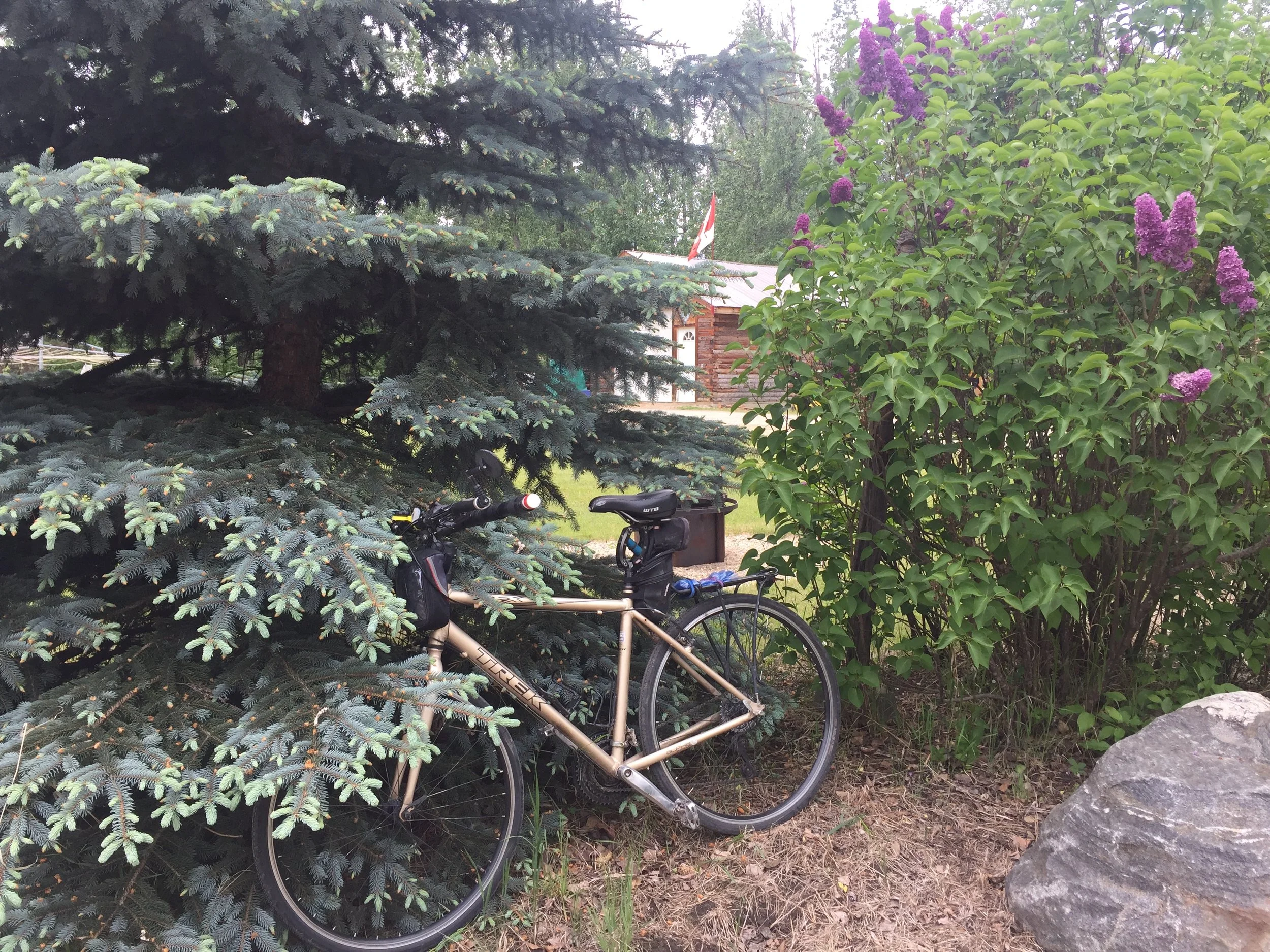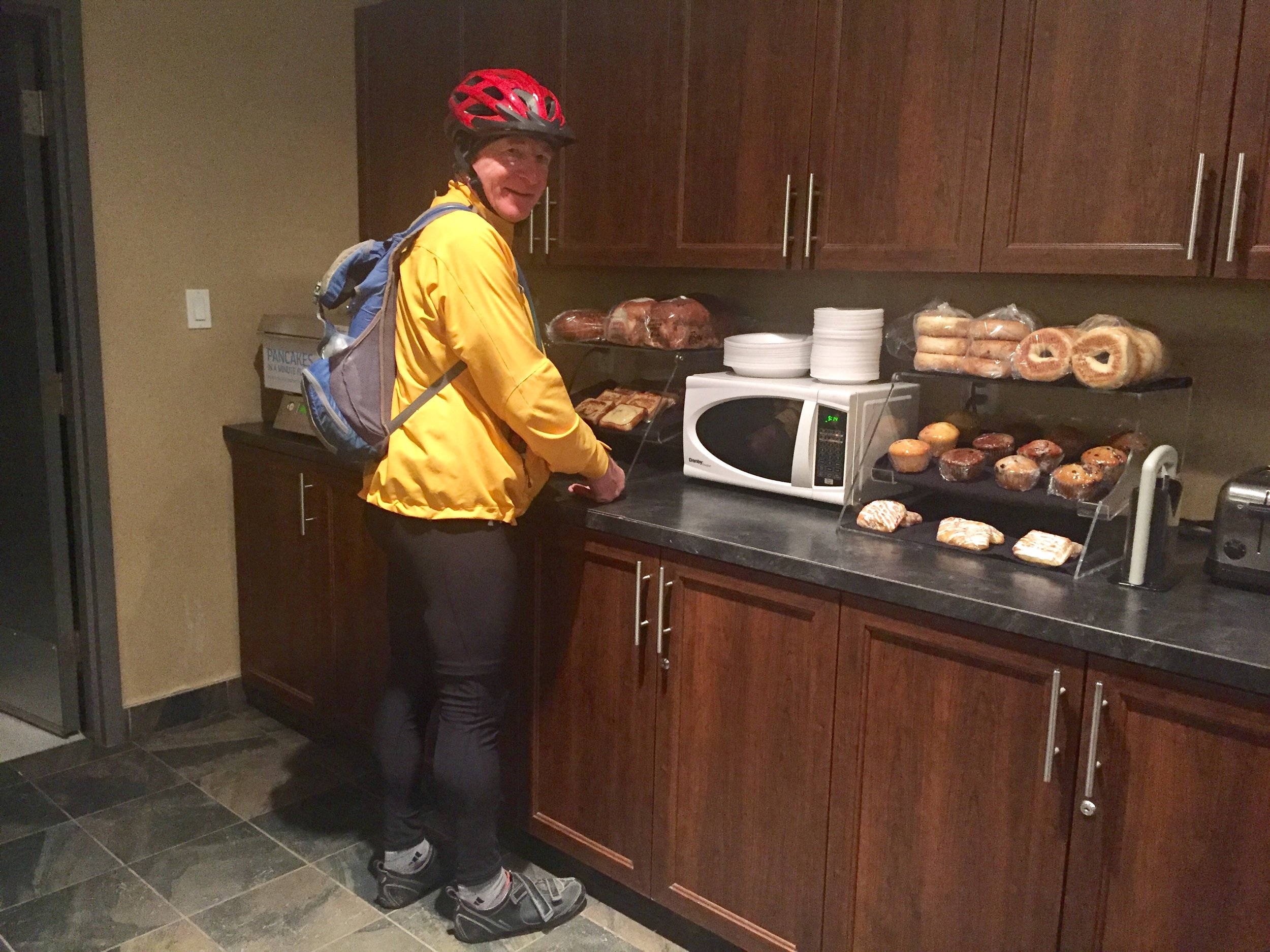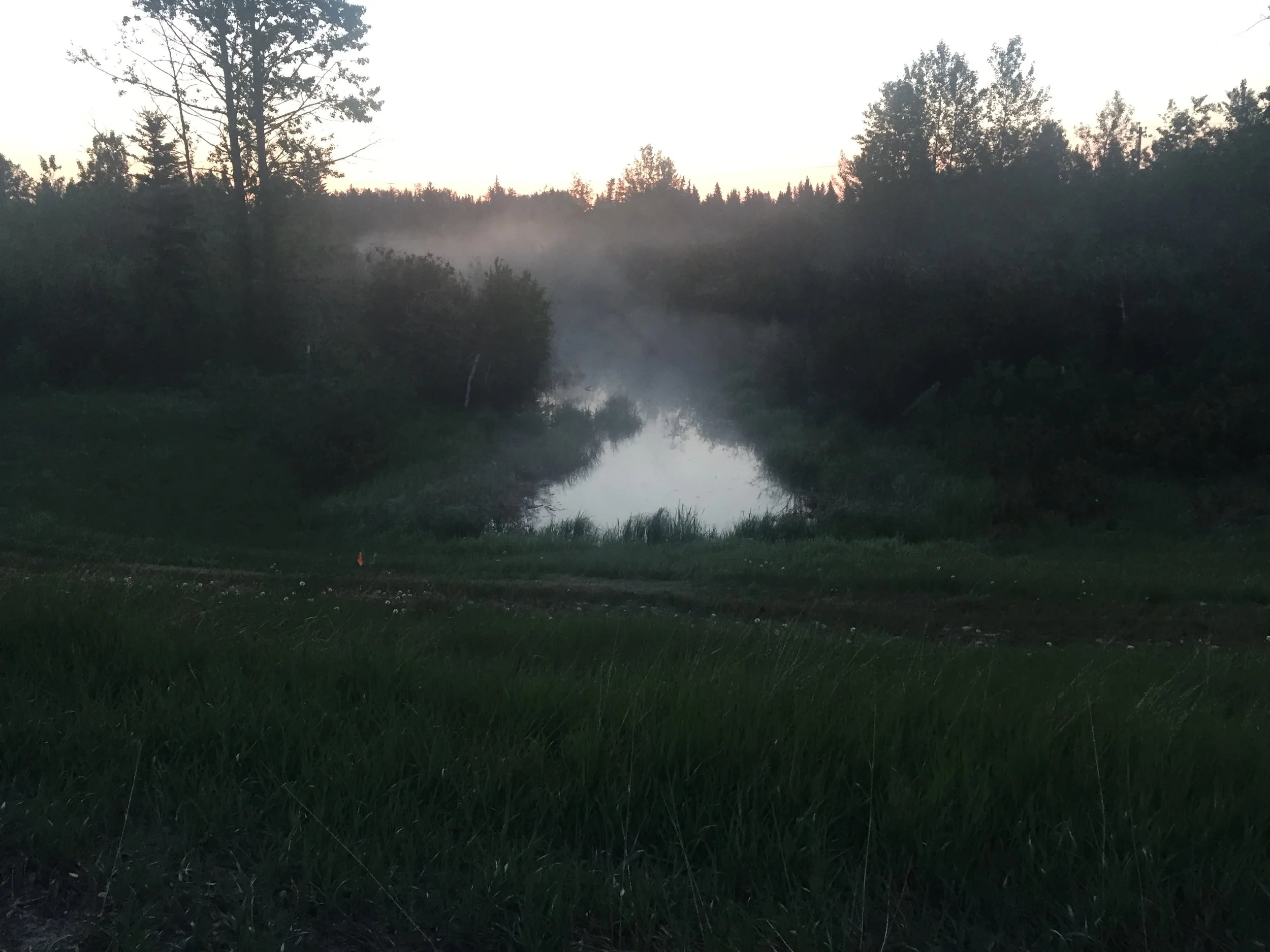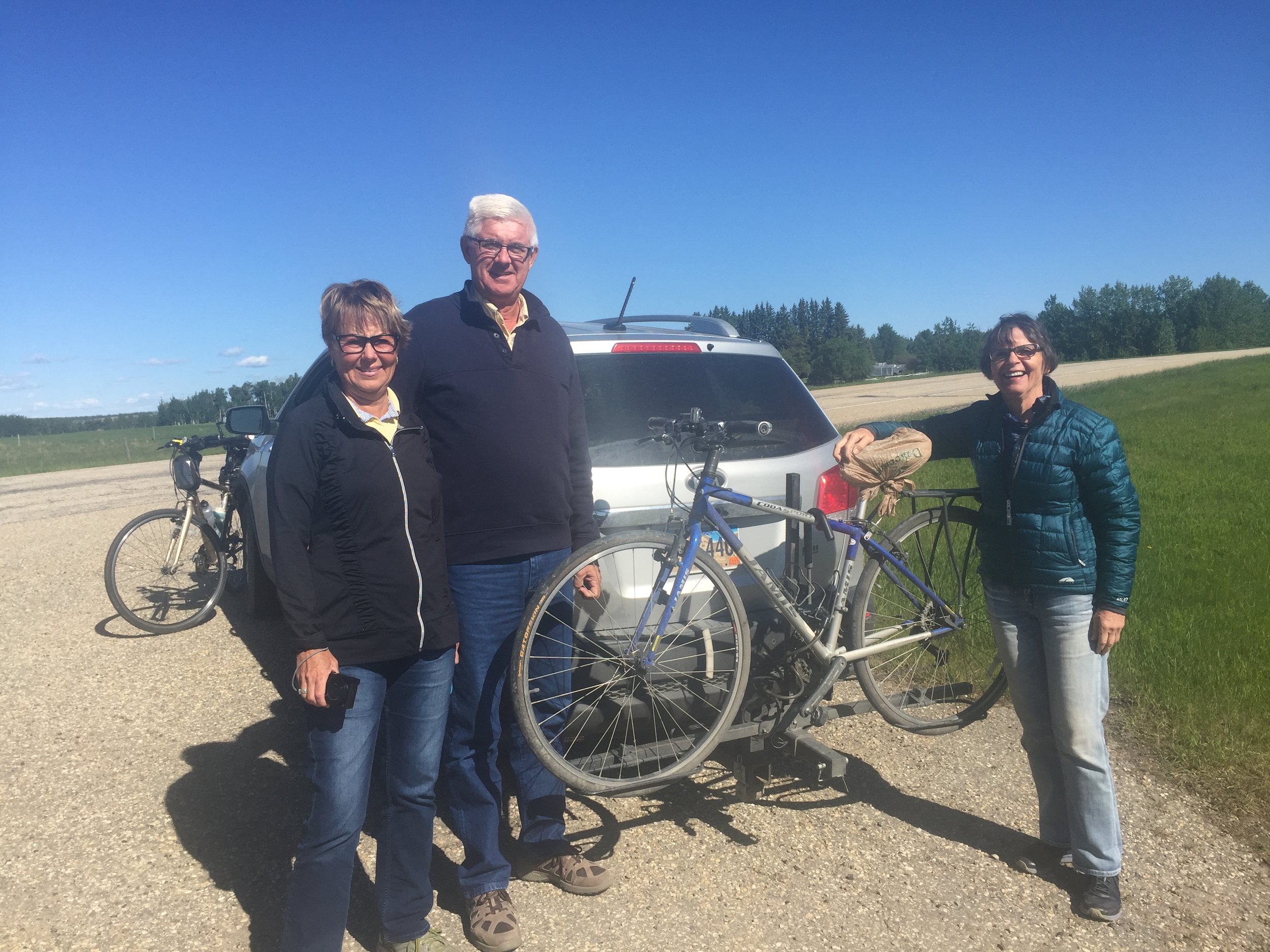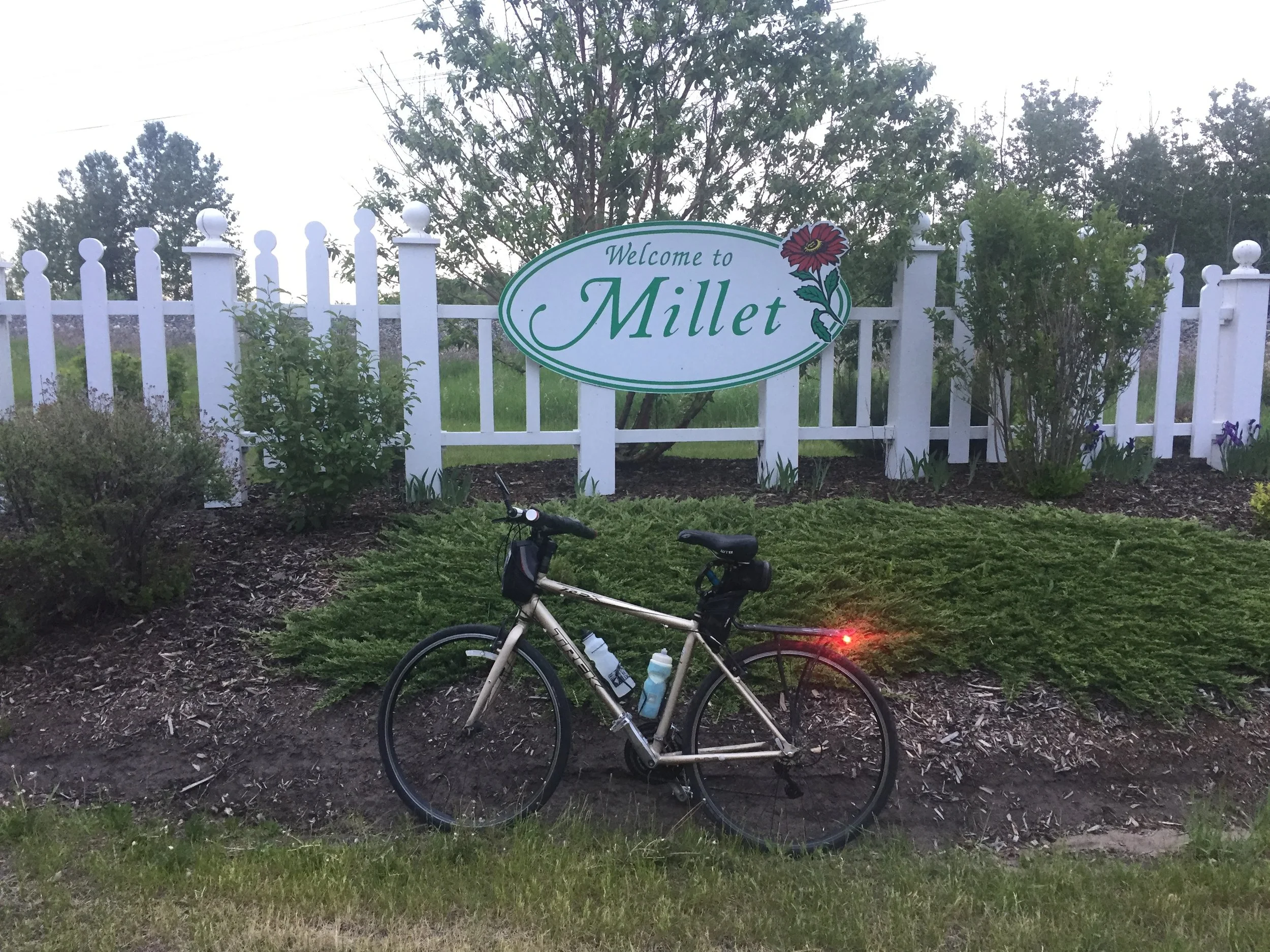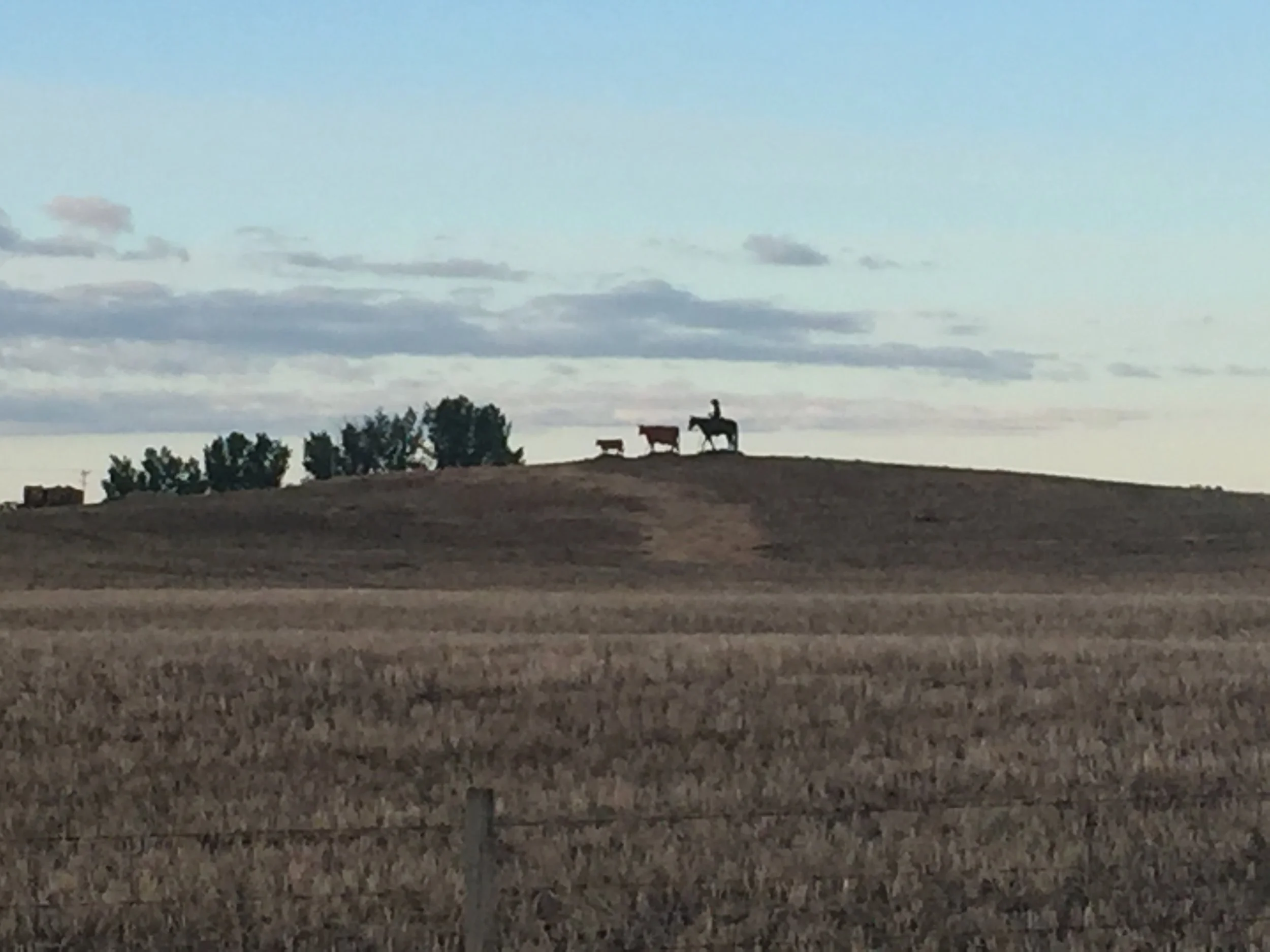Retirement is a joy when we can do what you want. My wife, Patricia, and I want to thank everyone for your encouragement over the 42 days I biked from Pierre, South Dakota to North Pole, Alaska.
A brief data summary: Total miles: 2,998 (4,997 kilometers). By state/province: South Dakota: 103; North Dakota: 303; Saskatchewan: 509; Alberta: 520; British Columbia: 564; Yukon Territory: 690; Alaska: 309. (Mileage based on overnight lodging.)
Days biked: 40 (+ 2 rain days). SD: 2; ND: 4; SK: 6 + 1 rain day; AB: 7 +1 rain day; BC: 9; YT: 9; AK: 3.
Average miles per day: 75. Average hours biking (including breaks): 8.0 hours. Average bike speed: 10.5 miles per hour.
Total Elevation gain: 59,200 feet. By state/province: SD: 1,145; ND: 3,309; SK: 1,520; AB: 6,788; BC: 21,415; YT: 19,458; AK: 5,565.
Total (Garmin) estimated calories burned biking: 132,469. My beginning weight: 183 pounds, ending weight: 182 pounds. Eating pattern: Daily vitamins before ride; banana one hour after start; peanut butter/jelly sandwich two hours after start; snack during ride (generally supplied by my wife) a bakery roll, boiled egg(s), milk, snack crackers, candy bar; one to two protein bars during the day; and a huge meal in the afternoon or early evening (two meals if I completed the day by noon). Meals were very generous portions of pasta, potatoes, or rice. For speedy digestion, carbohydrates were the main calorie source with small meat portions. Note: I take no medications. In order to anticipate muscle or joint failure I took no pain relief (except one Tylenol one evening).
Liquids consumed: Averaged two to three gallons (4-12 liters) of water/day supplemented with one to three electrolyte drinks, a protein drink after completion, glass(es) of milk during meal, a beer and sometimes a glass of red wine in evening. (I try to avoid all caffeine.)
An epilogue has more meaning than data. My brother-in-law, Rob Boyer, wrote this poem after my final blog post. It summarizes my ride.
IF YOU BELIEVE, YOU CAN ACHIEVE,
The year has arrived, that Gary had planned for
His desire to ride, from Pierre to the Pole
His announcement was met, with doubt and smiles
That he would be able, to complete 3000 miles.
With each revolution, more miles he would gain
Each night he would rest, and work thru the pain
With wildlife beside him, and drafting behind
Again many thought, he's out of his mind
With mountains to climb, and valley's to coast
He stayed steady at it, with nature his host
The mishaps were there, they did not deter
For he was determined, after all he’s from Pierre
As a Veteran he's proud, to have served this great land
And of the Coast Guardsmen who stopped, to lend him a hand
His Sag wagon near, with most of his gear
His comfort was knowing, Patricia was near
He was met at the Pole, with a small proud militia
Seth ,Liesl, Addie, Gretchen, Cora and Cheri
And his travel companion, and wife Patricia
As he finished his quest, with emotion and pride
He thanked Friends and Family, for support during his ride.
Rob Boyer
With peace of mind, I rode. Nobody pressured me to ride on nor stop. Although I wore soft ear plugs to cut down on road and wind noise, with clarity I could hear sounds from the woods and birds chirping for encouragement. At first I carried a small radio anticipating weather alerts. Two days, I listened an hour or so. I found it (commercials, news, weather, sports, and music) extremely distracting. Spiritual simplicity and nature were what I wanted. Simple. Clear. Ever-present. For weather, I watched clouds and felt wind just as those throughout the centuries. The past hundred years brought electronic confusion into all lives. I found it overwhelmingly peaceful without it during this ride and hope to blend old and new realities to close life's chapter.



